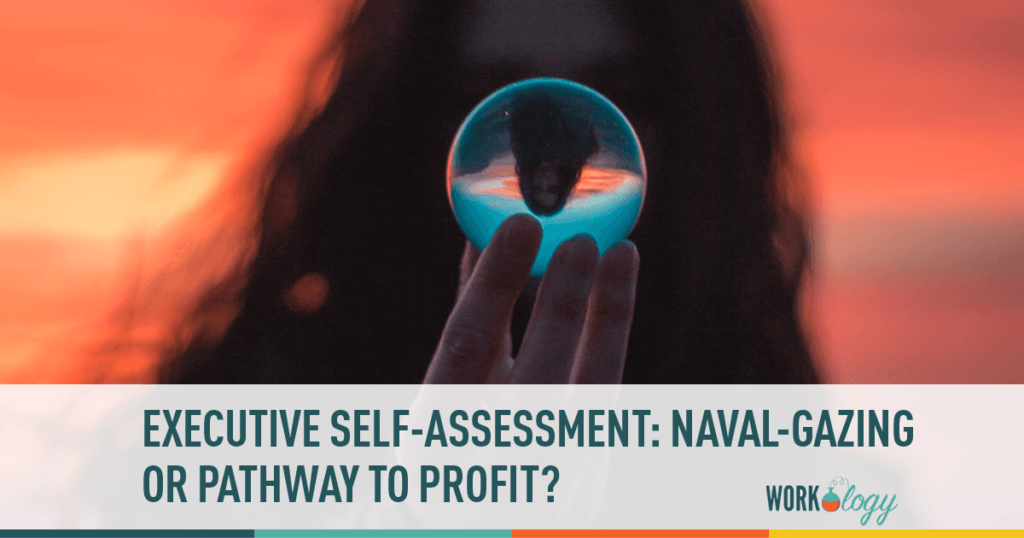Professional assessment is a critical component of the talent lifecycle, from the very first candidate exchange to the exit interview. But, many senior executives have a hard time justifying the time and effort required for ongoing self-assessment.
This is unfortunate, because targeted assessments at all professional levels can identify both opportunities and weaknesses in every set of skills and behaviors. More importantly, personal inventories often identify the source of miscommunication, which is ultimately responsible for gaps in communication and profit erosion.
I’ve routinely skipped structured self-assessment and training opportunities through the years for the same reasons other executives avoid them, mostly a perceived lack of time.
But, I recently participated in a two-day Gallup StrengthsFinder workshop in which I gained valuable insight into how I’m perceived by my co-workers, as well as the relative strengths and weaknesses in my communication with them.
It wasn’t deep, but it was wide
Before being introduced to Gallup’s assessment tool, I was already familiar with the Myers-Briggs Type Indicator as are most executives. So, I’m comfortable thinking about work teams in the broad categories of Extraversion, Sensing, Thinking, and Perception.
As I became familiar with the StrengthsFinder framework, it was relatively easy for me to overlay the categories of Promote, Nurture, Think, and Do on top of previous assessment work. After spending about thirty minutes taking their online test, Gallup pronounced that my five leading strengths consist of:
- Connectedness – you believe everything is connected in some way
- Input – you value, collect and archive information
- Restorative – you want to fix broken things and restore order
- Positivity – you encourage and praise others with enthusiasm
- Empathy – you sense and feel the experience of others
These are merely five out of thirty-four various strengths identified by the full assessment framework, and there’s apparently a very small rank difference between a person’s top ten strengths. So, this initial assessment of only five strength categories is a comparatively narrow and limited perspective.
But, from reading the literature and the reactions from a few of my colleagues, I believe a couple of my more prominent personality traits were accurately identified. And, it became obvious that by identifying and analyzing even a small fraction of my own traits and how they relate to the traits of my co-workers, we could all discover more efficient ways of working together as a team.
There’s good news and bad news
Most of the workshop focused on creating a common language so we could think about our interactions through these assessment perspectives, which were new to all of us. So, most of the time I focused on my top five strengths through a positive lens.
But, toward the end of the exercise we discussed the dark side of our traits and how others might perceive them negatively, and how we might react to those perceptions. Here is a view of my top five “strengths” through that darker lens:
- Connectedness – you are wishy-washy and passive
- Input – you are a hoarder, disorganized and surrounded by clutter
- Restorative – you are a critical, judgmental busy-body
- Positivity – you are superficial and insincere
- Empathy – you are overly involved and hyper-sensitive
When I was asked how these perceptions made me feel, my response ranged from defensive embarrassment and indignation, to anger and withdrawal. All feelings and behaviors that describe the opposite of how I want others to perceive me and how I would like to perceive myself.
You have to cut your coworkers and yourself some slack
You subconsciously perceive yourself in the form of your personal strengths, which you project to others as who you are and what’s important to you. When people disrespect, belittle or even question the value of these traits, you understandably become defensive.
But, the negative emotions of embarrassment, indignation, and anger – which are products of your defensiveness – can disrupt work, waste time and reduce profit. To keep business objectives on track, it’s critical to control these strong emotions, which is of course easier said than done.
But, it can be done and the increased profitability of your organization depends on it. The first step is to understand and remember that your greatest strengths can be taken too far until they’re transformed into your greatest weaknesses.
The second step is to be aware of when you’ve reached this point and remember that people are reacting negatively to the imbalance more than they are you or your strengths.
When you’re aware and conscious of this dynamic, it’s easier to dial back your behavior a few notches, out of a weakness zone and back into a strength zone. The resulting reduction in noise and drama will provide more room for creativity and engagement with others, which translates into increased profit for your organization.
Senior executives should leverage their social influence
The Gallup assessment reminded me that regardless of where I am in my career, just a small amount of time spent on introspection and modification of my own behavior can produce a profound and immediate impact on the rest of my team’s alignment and efficiency.
And, I believe the other workshop participants learned that the higher an executive goes in an organization, the more valuable their effort in self-assessment becomes.
Senior executives simply have a larger influence on the quality of communication between team members, so their efforts with self-assessment naturally result in a larger impact on the efficiency and profitability of the organization.









